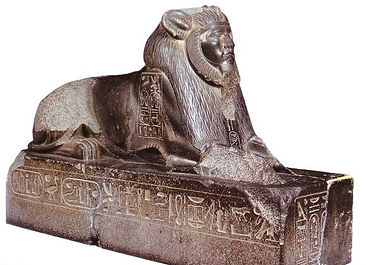13.
“Hyksos sphinx”: *
(aka Sphinx statue of Amenemhat III) sculpture dating back to the Middle Kingdom, 12th Dynasty reign of king Amenemhat III but mistakenly dated to the Hyksos Period, reign of king Nehesy, as his name was inscribed on the right shoulder of three statues & the strange facial features which look like those of the Hyksos King.
illustration
14.
domes of Hagia Sophia: *
the cathedral is famous in particular for its massive dome, it is considered the epitome of Byzantine architecture. It is 55 meters. high with a width of 32 x 31 meters. When first constructed it appeared compressed and spread out.
illustration
15.
paintings of Titian: *
Venus of Urbino- oil painting (1534); Galleria degli Uffizi collection, Florence; depicts nude young woman, identified as Venus, reclining on a couch in the sumptuous surroundings of a Renaissance palace; pose based on the Dresden Venus (started by Giorgione, completed by Titian, which he turned into a Venetian trademark- the reclining female nude); Titian moved Venus indoors, engaging her with the viewer making her sensuality explicit; devoid of classical or allegorical trappings, with none of the attributes of Venus- the painting is sensual & erotic.
illustration
16.
Cnidian aphrodite: *
The Ludovisi Cnidian Aphrodite, Roman marble copy (torso and thighs) with restored head, arms, legs and drapery support
illustration
17.
Hall of the Maidens Erechtheum: *
It is associated with many ancient & holy relics: the Palladion of Athena Polias (a wooden effigy fallen from heaven); the marks of Poseidon's trident & the subsequent salt water well; the sacred olive tree that sprouted when Athena struck the rock with her spear; the burial places of kings Kekrops & Erechtheus; the sacred precincts of Kekrops' 3 daughters and of the tribal heroes Pandion and Boutes. The need to preserve multiple adjacent sacred precincts (local religious geography) explains the complex floorplan. The eastern part of the building was dedicated to Athena Polias, western part served Poseidon-Erechtheus, holding altars of Hephaistus & Voutos, brother of Erechtheus. On the north side, there is another large porch with 6 Ionic columns, on the south, the "Porch of the Maidens", with 6 draped female figures (caryatids) as supporting columns; built to conceal the giant 15-foot beam supporting SW corner over the Kekropion after the building was reduced in size & budget with onset of the Peloponnesian war.
illustration x2
18.
Arabesques of Arabian horseshoe arches: *
gallery surrounding the Alhambra’s Court of Lions;
built under the Nasrid dynasty (1230-1492)
illustation
19.
Romanticism: *
Rooted in German Sturm und Drang, preferring intuition & emotion over rationalism, emphasized intense emotion (especially apprehension, horror, terror & awe) as authentic aesthetic experience, especially aspects of the sublime in nature. Elevated folk art & ancient custom to something noble. It perceived spontaneity as a desirable (as in the musical impromptu). In contrast to the rationalism & Classicism of the Enlightenment, Romanticism revived medievalism (an attempt to escape urban sprawl & industrialism).
20.
Isis: *
In the Hellenistic period (323–30 BC), when Egypt was ruled & settled by Greeks, Isis came to be worshipped by Greeks & Egyptians, along with a new god, Serapis. This diffused into the wider Mediterranean world. Her Greek devotees gave her traits taken from Greek gods (invention of marriage, protection of ships at sea); other Egyptian deities were also popular. Hellenistic culture was absorbed by Rome first century BC & Isis became a part of Roman religion. While her devotees were only a small proportion of the Empire's population, her worship was found all across its territory.








